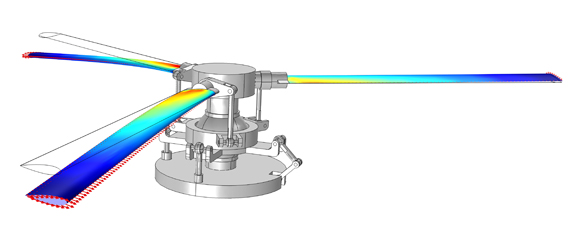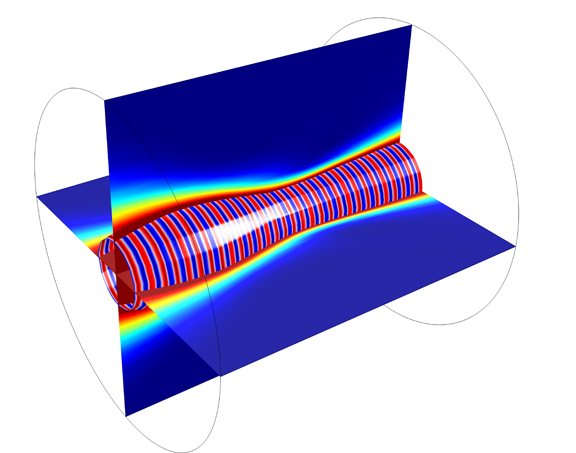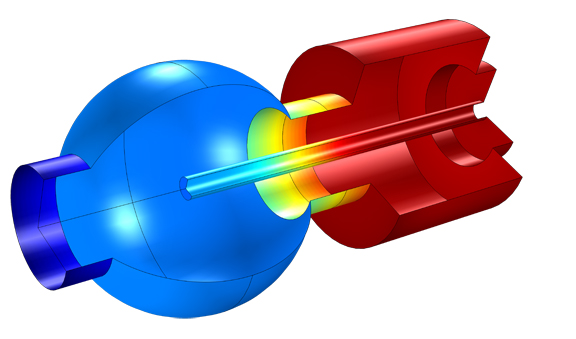May 30, 2013
COMSOL Multiphysics 4.3b serves as an intermediary release, a precursor to Version 4.4. In this release, new features come in the form of five new modules, each tailored to address a specific type of simulation.
- Multibody Dynamics Module, to analyze the assembly of rigid and flexible bodies;
- Wave Optics Module, to analyze electromagnetic wave propagation in optically large structures;
- Molecular Flow Module, to simulate rarefied gas flow in complex CAD geometries of vacuum systems;
- Semiconductor Module, to simulate semiconductor device operations; and
- Electrochemistry Module, to simulate electroanalysis, electrolysis.
Version 4.3b also marks the debut of LiveLink for Excel, a plug-in that allows you to conduct simulation scenarios with multiple parameters using Excel spreadsheets. The plug-in could potentially be deployed so users unfamiliar with COMSOL interface could launch and complete simulation jobs solely from within Microsoft Excel.
All the LiveLink plug-ins and specialized modules require COMSOL Multiphysics foundation product. Modules require additional licensing fees.
The Multibody Dynamics Module is meant for those who need to study the interaction of rigid bodies and flexible bodies. It’s capable of simulating transitional and rotational displacements, locking, prismatic joint, hinge joint, cylindrical joint, and more.
The Wave Optic Module, capable of electromagnetic wave propagation, is a good tool to simulate the behaviors of optical fibers and sensors, bidirectional couplers, plasmonic devices, metamaterials, and laser beam propagation. Bjorn Sjodin, VP of product management at COMSOL, said, “We wanted to do this ten years ago, but computers weren’t strong enough. With piece of an optical fiber that are very slender and slim, you generate an excessive amount of finite elements. The model could consume lots of memories.” Today’s workstations capable of supporting up to 200 GB RAM make this module feasible, he said.
The Molecular Module targets users dealing with mass spectrometers, semiconductor processing, satellite technology, and particle accelerators. Sjodin explained the module is commonly used to simulate doping semiconductor wafers.
The Semiconductor Module, by contrast, simulates operations in PN junctions, bipolar transistors, MOSFETs, MESFETs, thyristors, and Schottky diodes.
The Electrochemistry Module—with emphasis on electroanalysis, electrolysis, and electrodialysis—can be used for gluecose and gas sensors, among other things.
The modules debuting in Version 4.3b are a continuation of COMSOL’s strategy to issue specialized apps, targeting groups of users who repeatedly perform the same tasks. But, according to Sjodin, COMSOL is working on a toolkit that will allow users to develop their own customized user interface. The toolkit will operate mainly in a drag-and-drop interface, with little or no programming required. This could be of tremendous help to users beyond traditional aerospace and automotive markets. Simulation apps tailor-made for biomedical and oil & gas, for example, could go a long way to make the technology more accessible to users unfamiliar with typical engineering software terminologies and setups.
Subscribe to our FREE magazine, FREE email newsletters or both!
About the Author
Kenneth Wong is Digital Engineering’s resident blogger and senior editor. Email him at [email protected] or share your thoughts on this article at digitaleng.news/facebook.
Follow DERelated Topics









